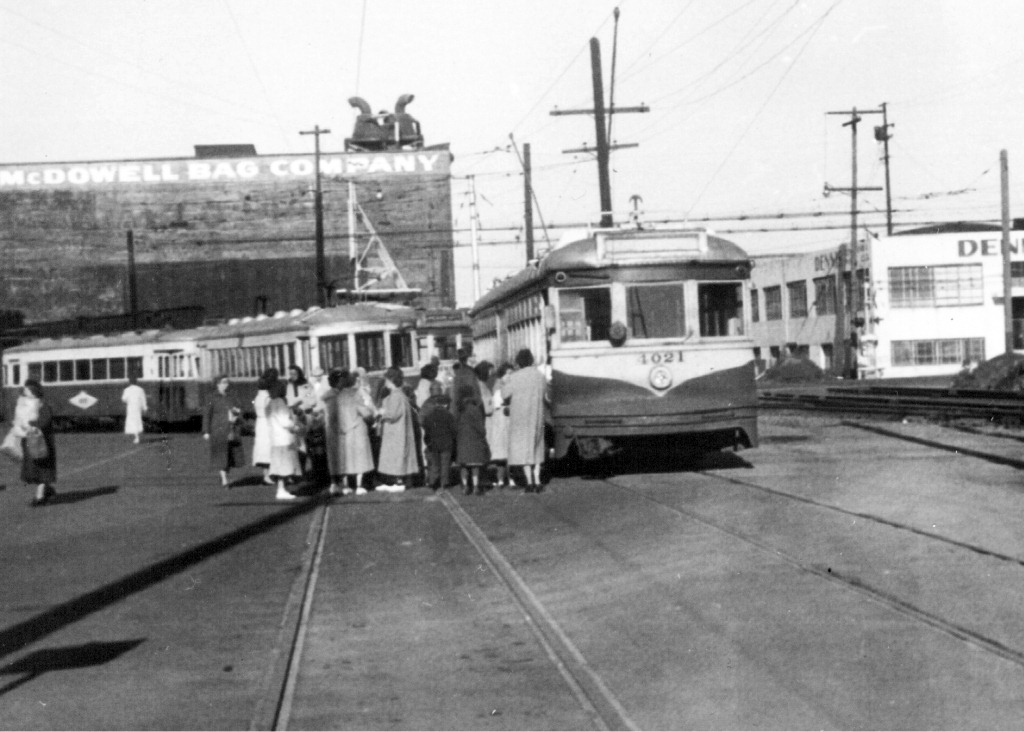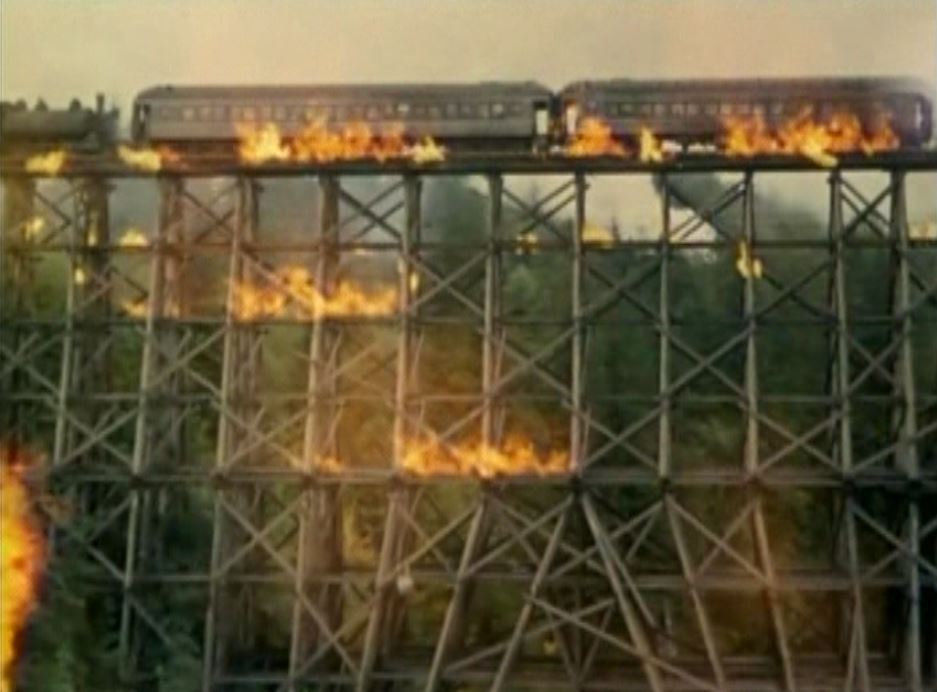-----
The origins of the PEPCO go back to 1891 with the creation of the East Side Railway Company. It wasn't the first street railway in Portland, as covered previously, but it was the genesis for Portland Traction as it gobbled up other local street railways into one massive company helmed under the guidance of Fred Morris. Morris intended the PT to run all the way down to Eugene, Oregon, but faced intense pressure from the competing Southern Pacific, then run by E.H. Harriman.
Unable to reach the intended destination in Eugene, PT's construction crews instead focused on the line between Lents and Gresham and plans were made to construct a new dam and powerplant (in what is now Cazadaro) to power the new extension. Due to the expansion of services in power delivery as well as rapid transit and real estate in 1902, the East Side Railway was rebranded as the Oregon Water, Power, and Light Company. (OWP&L)
Inbetween construction of the new dam, OWP&L continued expansion into Sellwood, Boring (with a new power station), and Troutdale by 1905. Money was also invested into popular destinations, as Oaks Amusement Park opened under the company in 1904 to bring more money in on the weekends. A spur and balloon loop around the park was also constructed, which the current Oregon Rail Historical Foundation (ORHF) uses a section of today.
In 1906, the OWP&L was sold to several interested parties, including the Milwaukee Road (who wanted the Troutdale Branch to reach Portland), Oregon Electric (who wanted the Oregon City branch for the same reason), Portland Railway (wanting the street railways in downtown), and Portland General Electric (PGE, wanting the Cazadaro powerplant on the Clackamas River.) In the end, Portland GE and Portland Railway would have joint ownership of the OWP&L, becoming the Portland Railway Light & Power Company. (PRL&PCo.) Still with us? Just checking.
 |
| Portland Railway Light & Power Logo (Wikipedia) |
| Mt. Hood Railway and Power Map (PDXhistory.com) |
Between 1912 and 1924, the PRL&P ran like any street railway in the US did in the early 20s: a huge spike in passenger traffic, then a long descent in profits onces people started buying automobiles. By 1924, PRL&P needed reorgnization due to multiple financial problems and was then reorganized and branded into Portland Electric Power Co, or "PEPCO". Or just the "PEP". Further reorganization included rehabilitation of still-used trolley systems and new passenger buses.
 |
| Portland Traction (PEPCO) cars outbound for Oregon City. Wait, is that a Hollywood Car? (AmericanRails.com) |
The Stock Market Crash of 1929 forced another reorganization of PEPCO as the Pacific Northwest Public Service Company, but the "PEPCO" name would still run the rail and bus services, with new company Portland Traction created to run the freight services. However, the company and its trolleys were still in massive dire straits.
In the early 1930s, the line to Estacada via Boring was cut off when the Boring trestle burned down (it was an incredibly nondescript fire). Due to the cessation of logging traffic and no major business in Estacada, the line was abandoned. By the late 1930s, PEPCO hoped some freight railroad could take their heavily-unprofitable interurban lines, but the possibility of having to run passenger services halted any potential buyers.
 |
| Screenshot of "Ring of Fire" used for dramatic purposes illustrating the Boring (yawn) trestle fire (MGM Studios) |
WWII did not bring a resurgence in business like it did with the other big electric roads in California; instead, a new highway out to the Boring logging companies (yawn) were made instead of rebuilding the burned trestle bridge. Today, out to Estacada, an abnormally large highway still exists that goes straight to nowhere. The bridge remains have since vanished in time.
After 1946, the company was sold to a California-based holding company called Portland Transit Co. Portland Traction would continue operation of the city-based streetcars while Portland GE would be spun off, seperate from the railroads. No efforts were made by Portland Transit to continue expansion, as they were more interested in selling redundant or unprofitable lines for the quickest buck possible.
 |
| Portland's Hawthorne Bridge ramp, westbound, 1957 (Vintage Portland) |
PEPCO continued to be seen on local area timetables between the Union Pacific and Southern Pacific Railroads, who acquired what remained as a joint ownership in 1962. The outer lines would be closed off in the 1970s and 1980s as business dried up, with the Gresham line sold to Portland Trimet for the current MAX line.
| Portland MAX Train bound for Gresham via Blue Line, crossing the Steel Bridge (Trimet News) |
The final remains of the PEPCO is a 6.5 stub between East Portland and Milwaukie purchased by Mr. Richard Samuels in 1987. He initially called his shortline operation the East Portland Traction Company in tribute, but it is now better known as the Oregon Pacific. He also purchased and restored Portland Traction No. 100, an EMD SW-1 which originally took over the electric freight engines in 1952. Today, the OPRR runs PT No. 100 on the ORHF's weekend trains out to Oaks Park and the 6.5 mile line continues to see business from local suppliers and sawmills.
| Portland Traction 100 on the OPRR's Oaks Park Line (Oregon Pacific Railroad) |
 |
| Richard Samuels with OPRR 1415 at the ORHF's yards (Portland Tribune) |
-----
Thank you for reading today, and join us on Thursday when we look at the many cartypes of the Portland Traction! You might even see some familiar faces along the way. Until then, ride safe and keep your pole on the wire!


No comments:
Post a Comment